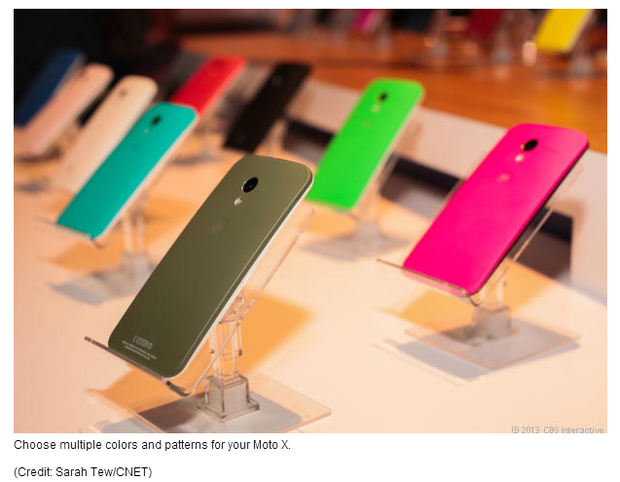Moto X's customizations are pure marketing genius


Android, brilliant that it is, has a problem. Specifically: most people who own an Android smartphone have no idea they have one. Android phones are generally bought by people who "just want a phone". The fact that such a device is unimaginably more capable than a circa-2008 featurephone is accidental.
We no longer work in a technology market in the way that we used to. We work in a market where normal people -- non-technologists -- happen to buy technology. Go back ten years and most people who bought technology actually cared about it and had some interest in it. That's no longer the case as the majority of people who buy technology do not care about technology.
So when HTC or whoever try and launch a new phone -- especially when it's Android -- I tune out totally. Because HTC and it's brethren still believe that you can sell devices on technical features.
Hence why my curiosity was piqued by the Moto X -- "what's this," I thought, "customisations? That's a different angle..."
If you're trying to sell a phone, you need an edge. The problem that you have then is that Apple -- currently at least -- has the best possible edge. What Apple managed to do was both incite and capitalise on the "fashionification" of technology.
The trend that Apple managed to follow was the transformation that took technology products as being something that sat inside the technology industry to a situation where technology products exist within consumer retail. That's a hugely important distinction. If you want to sell a non-technologist consumer a technology product, you need to behave more like a aspirational fashion brand than a "technology solutions provider". This is why Apple looks and behaves more like Louis Vuitton than IBM.
Edge
Generally speaking, if you're out to buy a phone today and you have decided not to buy an iPhone, you're pretty likely to buy a Samsung phone that happens to run Android.
Samsung got themselves into this position by spending a vast sum of money on marketing. Their objective was to get themselves into a position where Samsung is able to mop up whatever part of the market is left when people choose to avoid buying the iPhone.
The chink in Apple's armour is that there are people out there who will disqualify an iPhone from their shopping list. This will include people who just don't like Apple, had an iPhone but didn't like it, feel the iPhone is getting stale, is too expensive, and so on. But, as per my first point, any Venn diagram you draw with those circles on, any individual person that you plot on it will -- statistically -- not care one jot about technology.
This still leaves an opportunity though. There's enough people out there who don't want an iPhone for the aforementioned reasons and others, but that still want a nice phone, and -- to hammer the point home -- don't give a donut about technology.
Irrational
With Moto X, by making it customisable, Google/Motorola has created an edge that can capitalise on that gap in the market. They have created something in the market that they can own that's broad and -- importantly -- irrational. It's this edge that they can parlay into sales against Samsung, Nokia, and BlackBerry.
Consumers don't buy in a rational way. Consumers are inherently irrational in the way that they buy. There may be no logic at all in someone saying "I don't like Apple, I'm not buying an iPhone", but people do do that, and yet still need a phone.
(I'm not really intending "irrational" in a pejorative sense here -- think of it is a just "not rational".)
To a consumer, being able to have one finished in wood is more understandable than "it's got Bluetooth 4 + EDR". And that means it's a more attractive product to an individual in that market. A given consumer may not like wood, but the beauty of the Moto X's customisations is that it the customer now has a choice that's not iPhone, but is still "nice" because a) Android is good enough, b) the specs are good enough, and c) most importantly, the customisations make it theirs.
Technologists generally can't handle irrationality in consumer behaviour. But that's OK -- there's thousands of non-technologists ready to buy phones for every one of us technologists. Moto X's customisations takes the technologist's achilles heel of irrationality in buying behaviour and turns it into a strength. Someone can create the most ghastly phone in the world and still like it, and still want and desire it.
And when you're talking about desire, it's that part that makes the credit card come out.
What do you think? Post a comment, or talk to me on Twitter: @mbrit.
Image credit: Sarah Tew/CNET